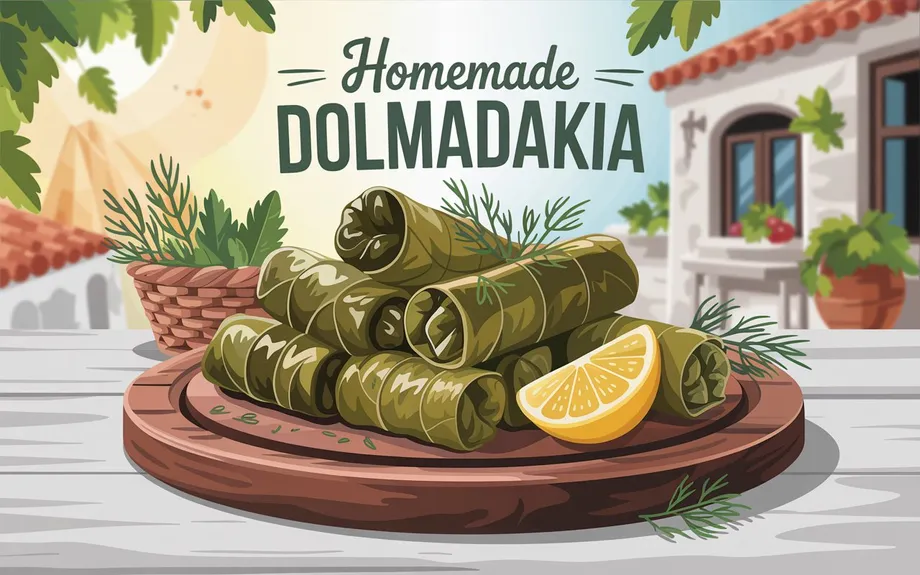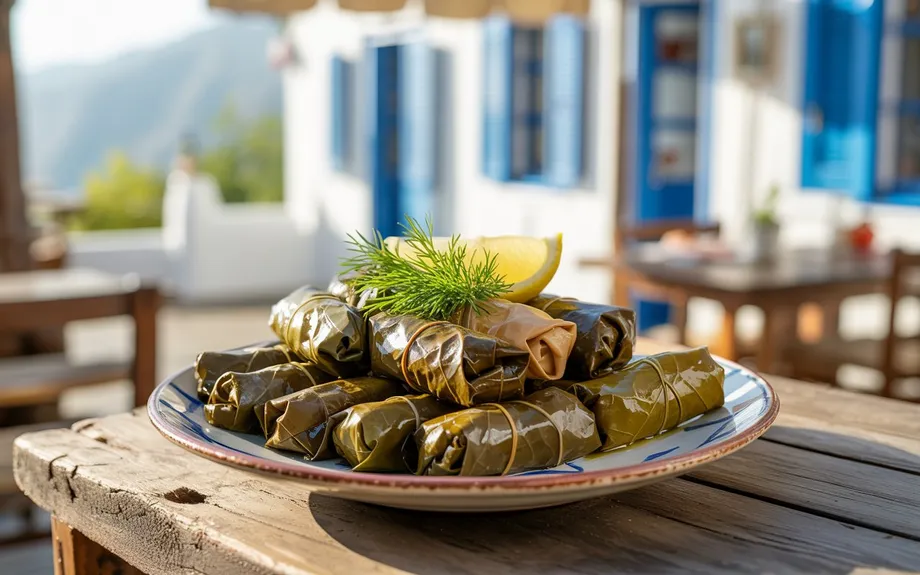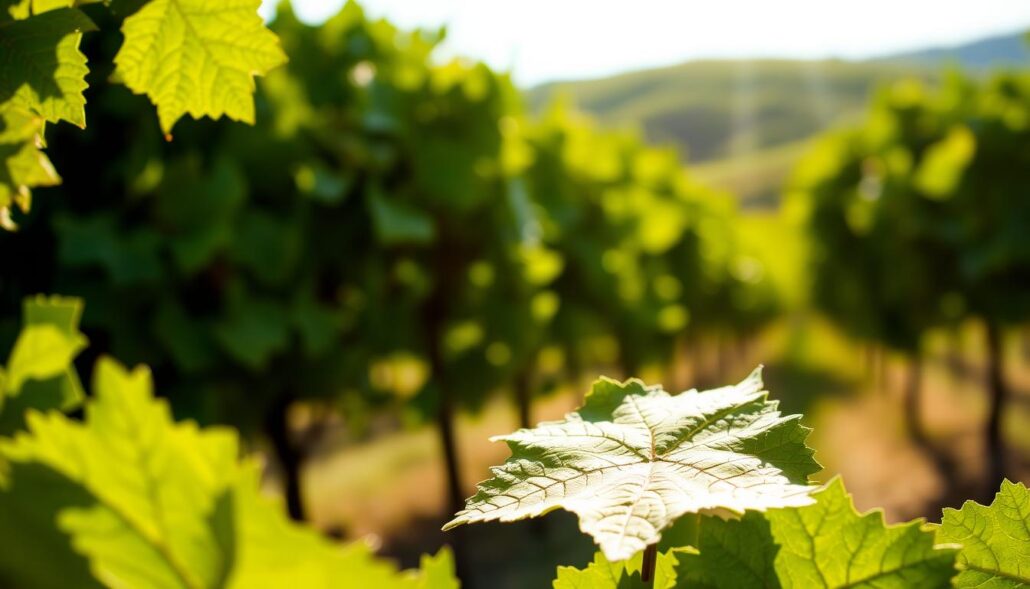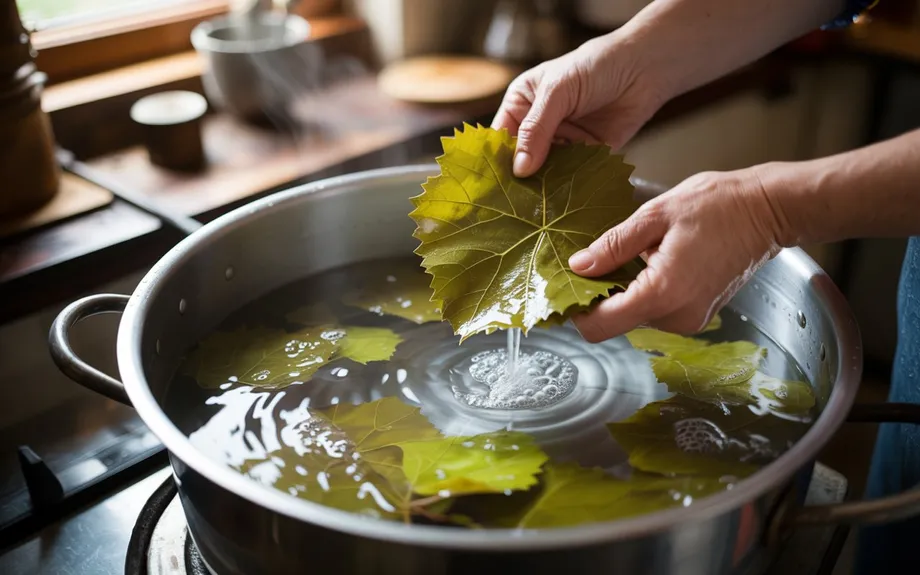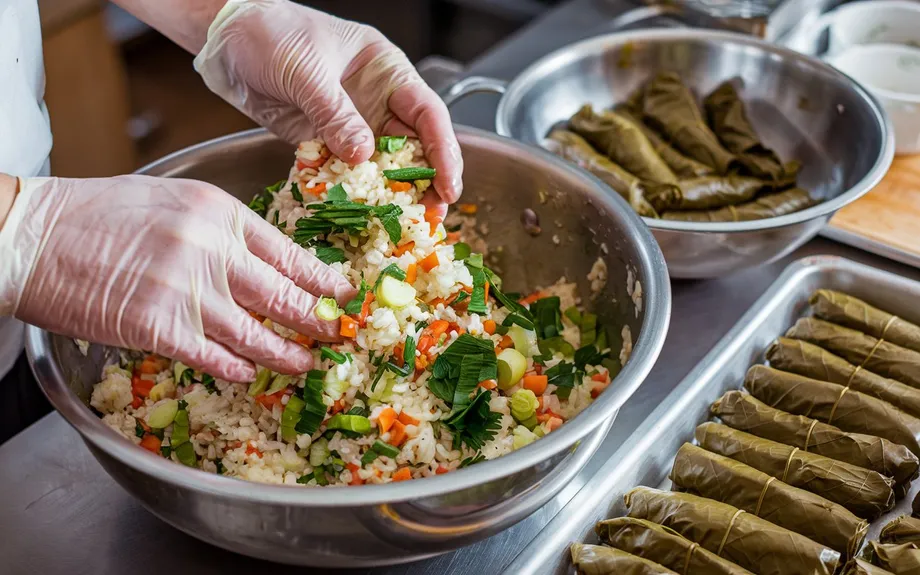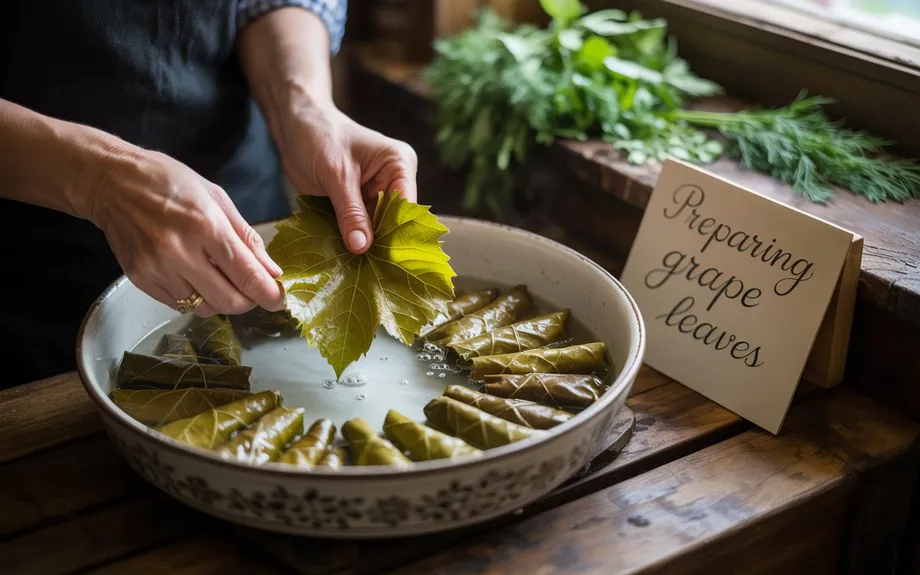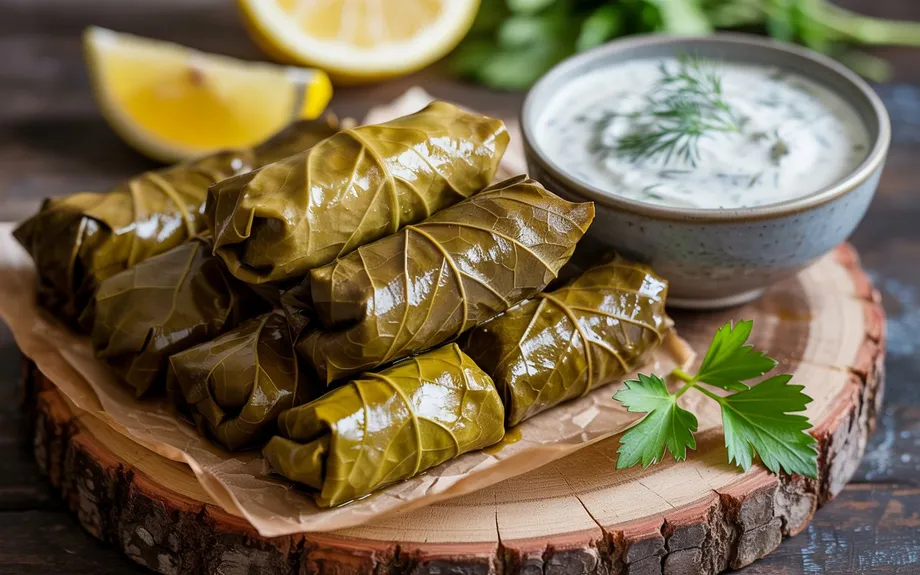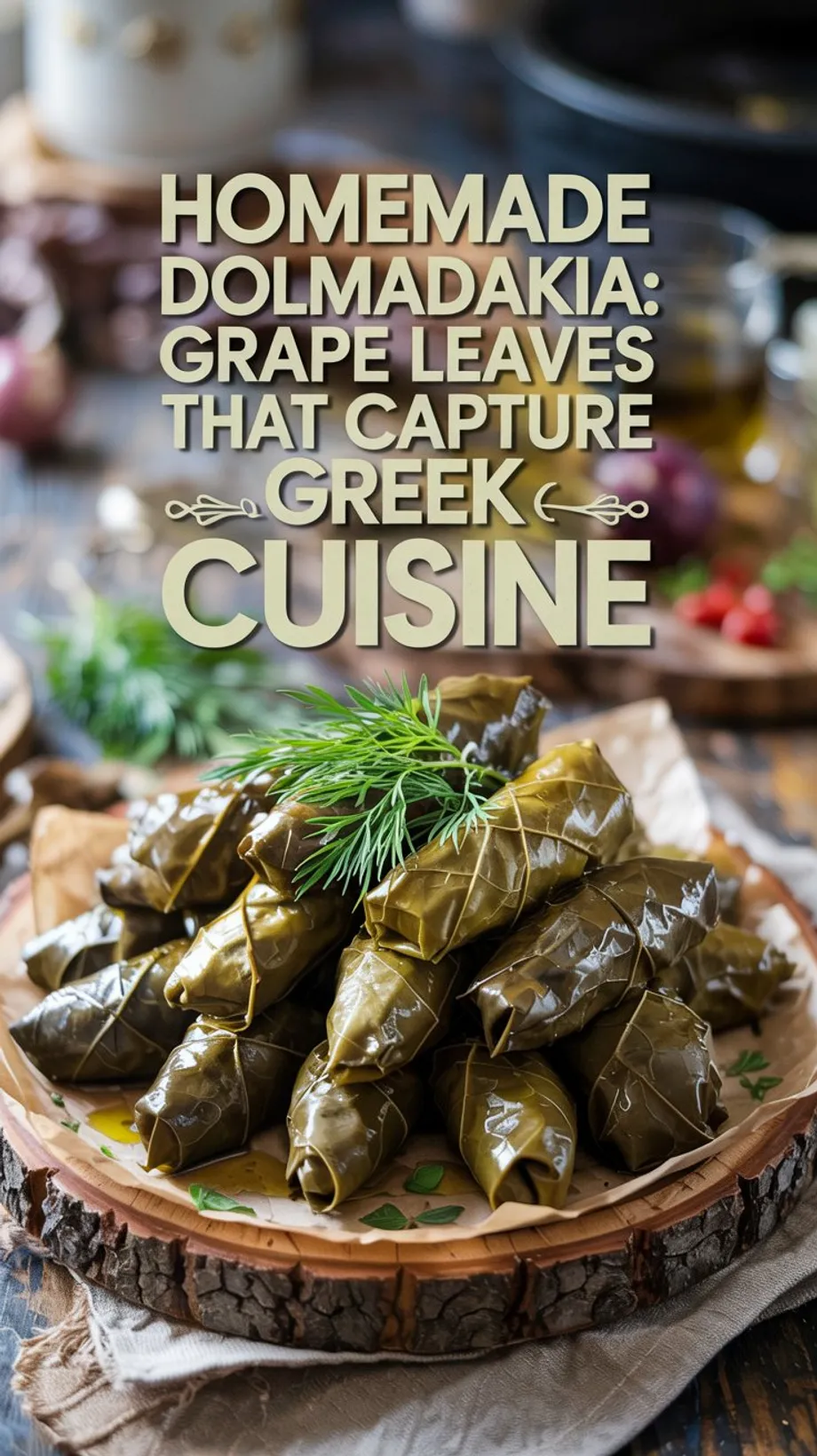Homemade Dolmadakia: Grape Leaves That Capture Greek Cuisine
Did you know Greeks use over 200 million grape leaves annually to create their beloved dolmadakia? These flavour-packed recipes and parcels have graced Mediterranean tables since Byzantine times, yet their appeal remains timeless. Imagine biting into tender leaves hugging aromatic rice flecked with dill and mint – a taste that’s danced on palates for centuries.
What makes Homemade Dolmadakia so special?
What makes these delicate bundles so special? They’re not just food – they’re edible storytelling. Each roll carries whispers of family kitchens where generations share secrets: “Always blanch the leaves gently”, “Let the rice soak up the lemon”. You’ll discover how this dish transforms simple ingredients into edible heritage, with fresh grape leaves and herbs doing a lively sirtaki on your tongue.
Modern British kitchens are perfect for crafting these vegan-friendly treasures. Forget tinned versions – homemade dolmades lets you control textures and flavours. Picture unwrapping a still-warm stuffed grape dolma, steam carrying scents of sun-drenched hillsides straight to your plate. The process? Surprisingly meditative once you find your rhythm.
We’ll guide you through selecting leaves (jarred versus fresh matters), balancing herbs, and achieving that signature tang. You’ll master the roll-and-tuck technique that keeps fillings snug yet fluffy. Ready to bring Athenian taverna magic to your dining table?
Introduction to Homemade Dolmadakia
Imagine unwrapping edible history – each bite-sized parcel bursting with flavours perfected over 800 years. These grape leaf bundles symbolise Greek culinary identity, balancing delicate textures with vibrant Mediterranean herbs, onions, and the unique taste of grape leaves. Families across Greece still gather to roll them, preserving techniques older than the Parthenon. This cherished tradition is often passed down through generations, where the simple act of preparing dolmadakia becomes a celebration of heritage and family bonding through shared recipes.
The laughter and stories shared during the rolling process infuse each bundle with love and memory, making them not just a dish, but a symbol of unity and continuity in Greek culture.
A Taste of Shared Heritage
Whether you choose the vegan classic or meat-enhanced dolmades, you’re participating in a ritual that unites generations. Grandmothers still murmur, “The tighter the roll, the bigger the heart” while teaching youngsters the art. This Greek speciality adapts effortlessly – serve iced with yoghurt at summer picnics or warm with avgolemono sauce during winter feasts.
| Version | Key Ingredients | Serving Style |
|---|---|---|
| Vegan | Rice, dill, mint, lemon | Room temperature with tzatziki |
| Meat (Dolmades) | Ground lamb, rice, oregano | Warm with avgolemono sauce |
Discover how this versatile dish features among must-try Greek dishes for newcomers. The Turkish-rooted name (dolma meaning “stuffed”) hints at centuries of cross-cultural exchange. Yet every Greek cook adds their signature – a splash of ouzo here, a handful of pine nuts there.
Perfect for UK dinner parties, these parcels travel well in lunchboxes too. Their make-ahead convenience explains why they’ve remained a Greek staple through wars, migrations, and changing food trends. Each roll isn’t just food – it’s a edible heirloom.
Ingredients & Essential Seasonal Grape Leaves
What separates good stuffed grape leaves from legendary dolmades? It starts with understanding your ingredients’ seasonal rhythms and hidden potential. The right grape leaves and herb combinations transform simple parcels into flavour explosions. For instance, using grape leaves that are freshly harvested during their peak season ensures that they are tender and packed with flavor, while the careful selection of herbs like dill, mint, and parsley can elevate the taste profile significantly. Each herb contributes its unique aroma and taste, creating a harmonious blend that complements the filling.
Additionally, the choice of rice can affect the texture and absorbency of the dish, making it crucial to select the right variety that will soak up the flavors of the spices and herbs in your dolmades recipe. This attention to detail in ingredient selection not only enhances the dish but also pays homage to the culinary traditions that have been passed down through generations.
Fresh vs Jarred Leaves
Fresh grape leaves shine in late spring through summer. You’ll spot them at UK farmers’ markets – look for pliable, palm-sized leaves without tears. These tender greens need just 30 seconds in boiling water to soften naturally.
Jarred versions work year-round. Rinse them thoroughly to ditch excess brine, then blanch briefly. Though slightly firmer, they’re perfect for beginners. One secret? Rub leaves with lemon juice after rinsing to boost brightness.
| Type | Availability | Preparation | Flavour |
|---|---|---|---|
| Fresh | Late spring/summer | Blanch 30 seconds | Subtle, grassy |
| Jarred | Year-round | Rinse + blanch 1 minute | Briny, robust |
Key Herbs and Rice Choices
Your rice matters. Medium-grain varieties like Carolina absorb flavours without turning mushy. Combine with finely chopped spring onions and tomatoes for texture.
Fresh herbs are non-negotiable. Dill brings that classic Greek zing, while mint lightens the mix. Hunt for fennel fronds (maratho) in Mediterranean shops – their liquorice-like notes elevate every bite.
Preparing Grape Leaves
Ever wondered why some stuffed parcels hold their shape while others unravel? The secret lies in leaf preparation – a make-or-break step that demands precision and attention to detail. Properly preparing the grape leaves is essential not only for maintaining their structural integrity but also for enhancing the overall flavor and texture of the dish, especially when making dolmades. This classic recipe showcases the versatility of grape leaves in delicious ways.
Whether you’re using fresh-picked or preserved leaves, mastering these techniques ensures your wraps stay intact from pot to plate. The right preparation involves washing the grape leaves thoroughly to remove any grit or impurities, followed by blanching to soften them just enough to make them pliable. This process is crucial as it prevents tearing during the rolling phase, allowing for a neat and presentable final product.
Moreover, a well-prepared leaf will better absorb the flavors of the filling, resulting in a more harmonious dish.
Washing and Blanching Techniques
Fresh leaves require gentle handling. Bring a large pot of salted water to a rolling boil, then submerge leaves for 2-3 minutes. Use a slotted spoon to transfer them immediately into iced water – this “shocking” stops cooking, locking in that vibrant green colour.
| Leaf Type | Water Prep | Key Tip |
|---|---|---|
| Fresh | Boil 3 minutes | Ice bath essential |
| Jarred | Rinse 2 minutes | Lemon rub boost |
For jarred versions, rinse under cold running water until the brine smell fades. Pat dry with kitchen towels – excess moisture leads to soggy fillings. Either type benefits from stem removal: lay leaves vein-side up and slice off thick central ribs with a paring knife.
Timing matters. Over-blanched fresh leaves turn limp, while under-rinsed jarred ones overwhelm with saltiness. Get this right, and you’ll create pliable wrappers that hug fillings like a Greek nonna’s embrace.
Mixing the Perfect Rice Filling
The secret to unforgettable stuffed grape leaves lies in crafting a rice mixture that sings with Mediterranean character. This filling acts as both flavour carrier and structural backbone, requiring careful balance between texture and taste. The perfect dolmades recipe hinges on this balance.
To achieve this, one must select the right types of rice, such as medium-grain varieties like Carolina, which are ideal for absorbing the rich flavors of the herbs and spices without becoming overly sticky. Additionally, incorporating a blend of fresh herbs like dill and mint can elevate the taste profile, adding layers of aromatic freshness that complement the grape leaves beautifully. Each leaf is a vessel for flavor.
The preparation process is just as crucial; sautéing the rice in olive oil not only enhances its flavor but also ensures it cooks evenly, allowing each grain to maintain its integrity. Ultimately, this thoughtful approach to the rice mixture is what transforms a simple dish into a memorable culinary experience.
Selecting the Right Rice and Herbs
Medium-grain rice like Carolina works best – it absorbs stock without becoming gluey. Begin by sautéing chopped spring onions in olive oil until translucent, then stir in raw rice grains. This coats each kernel in fat, boosting flavour absorption.
| Ingredient | Purpose | Pro Tip |
|---|---|---|
| Dill | Signature aroma | Chop finely to release oils |
| Mint | Freshness boost | Add just before mixing |
| Fennel fronds | Complex bitterness | Use young, tender leaves |
Balancing Flavours with Olive Oil and Lemon
Generous glugs of extra virgin olive oil keep the rice moist during cooking, ensuring that each grain is perfectly tender and infused with flavor. This oil not only adds richness but also helps in achieving a silky texture that complements the dolmades beautifully. Fold in diced tomatoes for natural sweetness, which not only enhances the overall taste but also contributes a vibrant color to the mixture.
Be sure to season aggressively – the grape leaves mellow flavours, allowing the spices and herbs to shine through. Finish with lemon zest and juice, tasting as you go to achieve a perfect balance of acidity and freshness that elevates this recipe.
Some cooks add toasted pine nuts for crunch, introducing a delightful contrast to the soft filling. Remember: the mixture should hold together when pressed, but not feel dense, as a light texture is key to a successful dolmadakia. Let it cool slightly before rolling – warm fillings soften grape leaves prematurely, making them difficult to handle and risking tears in the delicate grape leaves.
Step-by-Step Assembly of Dolmadakia
Ready to transform tender leaves into neat parcels? Begin by laying each grape leaf shiny side down – this simple step ensures the textured veins face inward, creating smooth exteriors. Place a heaped tablespoon of filling near the stem end, leaving space for rice expansion. Overstuffing risks burst seams, so show restraint here.
Fold the bottom edge over the filling, tucking it snugly. Bring both sides inward like wrapping a gift – overlapping flaps lock flavours inside. Roll upwards firmly but gently, forming compact 5cm bundles. The motion mirrors rolling sushi: tight enough to hold shape, loose enough to prevent tearing.
Arrange parcels seam-side down in your cooking pot. This clever positioning uses their weight to seal shut during simmering. Work in batches of 10-15 leaves to maintain moisture – dried grape leaves crack easily. You’ll soon find rhythm in the folding sequence, hands moving with practised ease.
Pro tip: Line your pot with spare leaves first. This protects the delicate stuffed grape parcels from direct heat while infusing extra flavour. As you layer each row, imagine building edible mosaics – every piece contributes to the final masterpiece.
Cooking Techniques & Timing
Perfecting your dolmadakia’s texture requires mastering the simmer – that magical moment when rice plumps and leaves soften into silky wraps. This process is crucial, as it not only ensures the rice absorbs the aromatic flavors from the herbs and spices but also allows the grape leaves to become tender and pliable. When preparing dolmades, don’t forget to season your filling with a pinch of salt pepper for added depth.
Both stovetop and oven methods deliver authentic results, but each suits different cooking styles. For instance, using a short-grain rice can yield a creamier filling, while long-grain varieties may provide a firmer texture. Understanding these nuances can elevate your dish, ensuring that each bite is a delightful balance of flavors and textures. This dolmadakia recipe can be enhanced further by drizzling a cup olive oil over the top before cooking.
Stovetop Simmering Secrets
Line your largest pot with three spare grape leaves – this natural barrier prevents sticking. Arrange parcels seam-side down in snug layers, like sardines in a tin. Pour in water until submerged, then add a generous cup olive oil for richness.
Here’s the clever bit: place an upside-down plate atop the bundles. This weight keeps them from bobbing during cooking. Bring to a gentle bubble over heat, then reduce to a whisper-simmer. Set your timer for 50 minutes – the rice needs this time to drink up flavours fully.
Oven-Baked Convenience
Preheat your oven to 180°C (160°C fan). Layer dolmadakia, or dolmades, in a 23x33cm dish, then cover tightly with foil. The enclosed heat circulates evenly, cooking parcels through without drying. Bake for 60 minutes – ideal when prepping multiple dishes using fresh ingredients.
| Method | Key Benefit | Best For |
|---|---|---|
| Stovetop | Traditional texture | Small batches |
| Oven | Hands-off cooking | Meal prepping |
Whichever technique you choose, test doneness by sampling one parcel of stuffed grape leaves. The rice should be tender, leaves yielding but intact. For perfect results every time, consult this detailed stuffed grape leaves recipe.
Serving Suggestions and Styling
Your final act transforms these parcels into a feast for the senses. Picture golden-green bundles glistening with olive oil, their citrus aroma mingling with fresh herbs, inviting everyone to take a closer look. As you plate them, the vibrant colors of the herbs contrast beautifully with the rich green of the grape leaves, creating an eye-catching display. This is where culinary craft meets edible artistry.
Yoghurt Sauce and Accompaniments
Whisk thick Greek yoghurt with minced garlic, chopped dill, and a squeeze of lemon juice for brightness. Drizzle over warm parcels or serve alongside for dipping – the creamy tang cuts through the rice’s richness beautifully.
For summer gatherings, chill the sauce and add mint leaves. Pair with marinated olives and toasted pitta triangles. These sides create balance without overshadowing your star dish.
Presentation Homemade Dolmadakia Tips for Your Plate
Arrange parcels of stuffed grape leaves, or dolmades, in sunburst patterns on a white plate, tucking lemon wedges between them for a refreshing burst of citrus that complements the flavors beautifully. Consider adding a sprinkle of salt pepper and sea salt over the lemon wedges to enhance their brightness.
Scatter edible flowers or fennel fronds for colour, as these not only add visual appeal but also bring a hint of aromatic freshness. A final zigzag of olive oil adds gloss, making the dish look even more inviting and delicious.
For meze spreads, cluster them artfully with creamy hummus and vibrant roasted peppers to create a colorful and enticing platter. Use small bowls for sauces – it keeps flavours distinct and allows guests to customize their bites. You might also include a tangy tzatziki or a spicy harissa for variety. Remember to use fresh ingredients: cool stoneware suits summer, while terracotta dishes echo Mediterranean warmth, enhancing the overall dining experience and inviting guests to savor each element of the meal.
FAQ
Can I use jarred grape leaves instead of fresh ones?
Yes! Jarred grape leaves work well if fresh ones aren’t available. These preserved leaves are often packed in brine, which can add a distinct flavor to your dolmades recipe. Just rinse them thoroughly to remove excess brine and soften their tangy flavour, ensuring they are not overly salty. For best results, blanch them briefly in boiling water before stuffing, as this process will help to soften the leaves further and make them more pliable for rolling. You can also season the filling with salt pepper for added taste.
What type of rice is best for the filling?
Can I substitute herbs like dill or mint in Homemade Dolmadakia?
How do I prevent the leaves from tearing during assembly?
Should I cook dolmadakia on the stovetop or in the oven?
What’s the best sauce to serve with dolmadakia?
How long can I store leftover homemade dolmadakia?
Are dolmadakia suitable for vegetarians?
Yes! Traditional recipes for dolmades use rice, herbs, and olive oil, which not only provide a delightful flavor but also contribute to the overall texture and nutritional value of the dish. The rice serves as a hearty base, while the herbs, such as dill and mint, add a refreshing aroma and taste. Onions can also be included in the filling for added depth and flavor, while the olive oil adds healthy fat to the dish.

